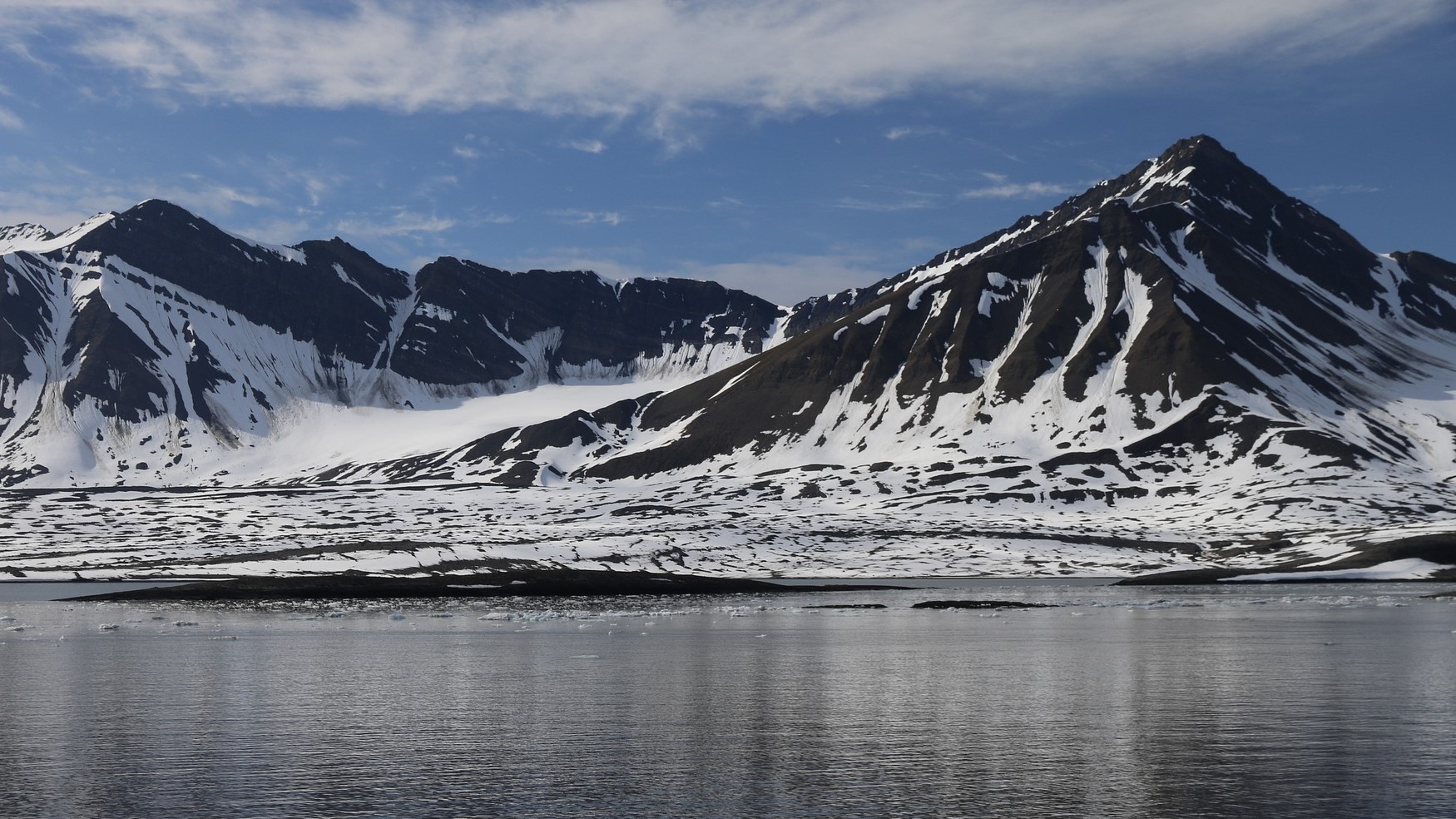Where Does Santa Get His Coal?

A version of this post first appeared on the Scientific American blog network.
Were you naughty (or lucky) enough to get some coal in your stocking this Christmas? Congratulations! Coal is actually a fascinating rock, and tells us a lot about the geology of ages past in the locations where it’s found. And I mean, how often are you gifted rocks that burn? (Please don’t burn them, though.)
You probably wouldn’t expect Santa to be able to locally source his coal – after all, it’s a rock that requires swampy or marshy areas with lots of lush plants as raw ingredients for its formation. That’s not really what you find around the North Pole! But a mere 650 miles away, halfway to Norway, you’ll find an island chain that provides all the coal Santa would ever need. It’s the glacier-capped archipelago of Svalbard, and Santa wouldn’t even have had to go digging when he first went looking for coal. It was right in plain sight:
On the west side of the main island Spitsbergen, the coal seams are exposed in the mountain sides on several locations, especially around the large fiord called Isfjorden in the center of the island. These coal outcrops were easy to discover for Europeans familiar with the visual appearance of coal. The Svalbard coal was first mentioned by the whale hunters of the 17th century, who used it on board their ships.

A miner brings out the first wagon of coal at Svea mine, Spetsbergen, in 1918. Credit: Tekniska museet (CC BY-SA 2.0)
You wouldn’t be thinking of coal when you first land on the island. It’s a tiny bit warmer than other locations in its latitude, but it’s still very Arctic in its climate. The growing season can be measured in weeks rather than months some years. Plants don’t have a lot of time to grow. You won’t find densely populated marshes or swamps. So how did the coal get here?
A combination of climate change and plate tectonics provides the answer.
Svalbard is a well-traveled archipelago. We don’t know all the places on Earth it’s been, but we do know that six hundred million years ago, it was chilling – literally – around the South Pole. Over the past half-billion years, it’s gradually made its way north, with a layover near the equator in the Devonian. Icy Antarctic deserts became blazing hot equatorial deserts for a time. In the early Carboniferous, Svalbard had crept back into the tropics, and newly-evolved plants took full advantage, flourishing in verdant swamps.
The swamps of Carboniferous Svalbard have no modern analogue anywhere in the world: not only were seedless plants and ferns extremely important in this community, but there were no birds singing or insects with humming wings. Birds did not emerge until Jurassic times 100 million years later, and all insects of the Carboniferous swamps had fixed wings.
As Svalbard continued its long travels north, the swamps were buried under sediment, and the plant matter compressed and gently cooked into coal.

You can still see the remains of the old coal mining infrastructure on the hills above Longyearbyen, Svalbard. Credit: Smudge 9000 (CC BY-SA 2.0)
But this isn’t the Arctic coal we’re looking for. It’s in the Arctic now, but it formed a long time ago and very far away. However, Svalbard is home to coal that formed either very close to or within the Arctic circle! Let’s zip forward to the Paleogene, around 60 million years ago, when Svalbard had reached a latitude of 65-68° N. You’d think, straddling the Arctic Circle, it would have been too cold for coal, but this was an epoch where temperatures on Earth were much higher than they are today. Svalbard was warm, humid, and with tectonic forces creating a deep basin, a perfect location for coal-creating plants to flourish. The coastal plain hosted thick peat mires that could stretch more than three miles across. They often became raised mires, which held back the encroaching sea and allowed even thicker peat to accumulate. Occasionally, the mires flooded and became swamps. All of that plant material then found itself buried under sediments, where it formed 100% Made-in-the-Arctic coal.

Gruve 7 coal mine, Norway’s last working mine in Svalbard. It’s slated to close in 2023. Credit: Bernt Rostad (CC BY-SA 2.0)
Later erosion and uplift would reveal coal seams that Santa could access with ease, even before the mines that powered the region opened. And Santa won’t have any trouble collecting locally-sourced coal even with most of the mines shutting down: if he can make it down a chimney safely, I’m certain he can visit old mineshafts without any problems.
So if you got coal in your stocking this year, celebrate it! It’s a rare example of the fact that coal can form in some very unlikely places, given the right conditions.
Rosetta Stones and Dana Hunter’s Unconformity wouldn’t be possible without you! If you like my content, there are many ways to show your support.
This website is a member of the Amazon Affiliates program. I get a small commission when you use my affiliate link to make a purchase.
Thank you so much for your support!




